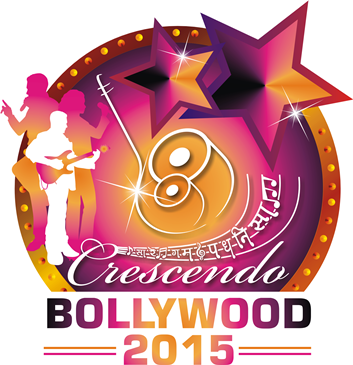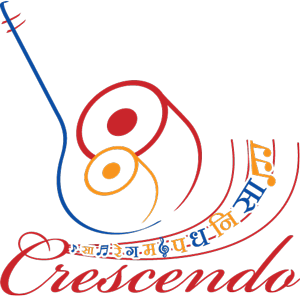Musical Instruments in India through the ages - by Chaitanya Kunte
Instruments form a major section of music making in all forms of music. Indian music is also not an exception to this. There is a rich and wide spectrum of instruments in art music and folk music of India. Here we are going to have a glance on musical instruments in Indian music through the ages.
Vedic Music (2500 BC - 1000 BC)
Vedic literature refers to various types of musical instruments. The bow-shaped Veena with many varieties such as Godhaa, Vakraa, Alabu, Kapishirsha Veena are mentioned in Vedic texts. Other stringed instruments were Aaghaati or Kaand Veena (like todays Ektari), Gargar (like harp) and Waan (hundred string lute). The Dundubhi (drum), Bhoo-Dundubhi (earthern drum) and Talav (single drum) were percussion instruments; and Venu (flute), Tunav (like a war trumpet Tutaari), Naali (metal flute), Bakur (two piped flute), Karadhuni (conch attached to flute) were blowing instruments during Vedic period.
In the epics, Buddhist & Jain sources, many musical instruments are mentioned such as - The percussion instruments mentioned are Marduk, Dardur, Mridang, Dindim, Panaw, Anak, Adambar. Cymbals such as Patah & Zarzar are mentioned in Panini's grammar text. The string instruments - Veena, Gargar. Blowing instruments - Venu, Vamshi, Tunaw, Shankha, Bheri.
Natya Shastra (3th century AD)
By the time of NatyaShastra, there was much development in instruments; naturally NatyaShastra mentions several musical instruments and the way they should be played. It classifies musical instruments in to four categories - (1) Tata (lutes) (2) Sushira (flute) (3) Ghana (cymbals or solid bodied isntruments) (4) Awanadhha (drums). This classification given by Bharat became a role model of further studies and classification of instruments and which is actually valid till date.
String instruments - Chitra (seven stringed lute), Vipanchi (nine stringed lute), Ghoshaa (prototype of Tanpura) & Kachhapi Veena.
Blowing instruments - Vamsha and Venu (bamboo flutes), Shankha (coanch), Tundakini and Tutari (war trumpets),
Percussion instruments - Mridanga, Dardur, TriPushkar, Dundubhi, Panav, Dindim, Duff, Zallari.
Solid bodied instruments - Taal, Patah, Ghanta - these instruments were used to keep rhythm with showing Sam & Kaal divisions of Taal.
One can see many of these instruments in paintings in Ajanta caves & sculptures at Ellora, Sanchi, etc.
Sangeet Ratnakar (13th century AD)
In the sixth chapter 'Waadyadhyaay' of Sangeet Ratnakar, Sharangdeva gives explanation of classification of instruments into four categories, manufacturing and playing techniques of instruments, as following -
String instruments - Ekatantri (single stringed instrument, todays Ekatari), Tritantrika (three strings), Jantra, MattaKokila (21 stringed lute, todays Swar Mandal), Alapini Veena (a drone instruments resembling to Tanpura), Kinnari Veena (Veena with three drones), Chitra (seven stringed lute), Vipanchi (nine stringed lute), RavanHasta (todays Ravanhathha or Koka).
Blowing instruments - Venu (9 inch long and thumb shaped bamboo flute with seven holes for producing note) and Vamsha, Pawa, Murali (bamboo flutes), Kahala (metal flute), Shankha (coach), Shring, Madhukari (Horns), Tundakini and Tutari (war trumpets)
Percussion instruments - Mardal, Dundubhi, Tumbaki, Ghat, Mridanga, Dardur. There is a mention of many folk percussion instruments such as Hudukka, Kudukka, Selluka, Dhakka, Runja, Damaruk.
Solid bodied instruments - Taal, Patah, Ghanta, Kshudra Ghantika, Jaya Ghanta, Patta, Shukti. The dancer's anklets (ghungru) were called as 'Ghargharikaa'.
Medieval Period & Modern Period
In last seven centuries, there is much addition and replacements in instruments due to a vast change in performing tradition and techniques.
String instruments - There are many stringed instruments to which one can classify in different categories, such as instruments to play with bow or pluck, instruments having frets and fretless ones, instruments with skins or wooden sound post, instruments having resonating strings, etc. Tanpura became an essential drone instrument with emergence of Dhrupad and Khayal to provide base note to singer.
The ancient Veena was replaced with Been or RudraVeena with two drones and frets. There are other instruments similar to Been such as VichitraVeena, Gotaa Been, etc. Sitar, SurBahar, Kachhawa belong to a family of string instruments which have frets and played in solo style. The development of Sitar was a major phenomenon in 19th cent which made a change in instrumental styles or Gatkari formats (Alap-Jod-Jhala, Masitkhani Gat, Razakhani Gat, Tant Ang and Gayaki Ang playing).
Sarangi originated from folk music, became an important accompanying instrument by the rise of Khayal & Thumari. Solo concert status was given to Sarangi by Bundu Khan and Ram Narayan. Other instruments in the family of Sarangi are Kamaicha, Sarinda, Chikara, Ravanhathha. With combination of Sitar and Sarangi, the instruments like Dilruba, Israj, Taus, and Taar Shehnai were made.
Rabab was modified into Sarod which became a prominent solo instrument under Wazir Khan, Allauddin Khan, Hafiz Ahmed Khan, Amjad Ali Khan. SurSingar was invented with combination of Sarangi, Sarod and Sitar by Ust Allauddin Khan.
The western violin was adapted in Indian music in last century and was popularized by Pt Gajananbuwa Joshi, V G Jog, N. Rajam & D K Datar. One can find similar instruments such as Ravanhathha, Penna, Banam in folk music of India. SwarMandal or Kanun was used for tonal support while singing. Ekatari, Tuntune, Gopichand, Tingri, Anand Lahari are the single stringed instruments basically used to maintain tempo rather than providing base note.
Santoor became very popular under propagation by Pt. Shivkumar Sharma.
Along with development of this wide spectrum of stringed instruments Gharanas/Baaj of playing also developed such as Seniya/Maihar Gharana (Ust Allauddin Khan, Ust Ali Akbar Khan, Pt Ravi Shankar, Pt. Nikhil Banerji), Itawa/Gauripur Gharana (Vilayat Khan, Imrat Khan, Shahid Parvez), Jafferkhani Baaj (Abdul Halim Jaffer Khan), etc.
Blowing instruments - Many varieties of flutes were made such as Bansuri, Venu, Pawa, Pawari, Murali (bamboo flutes). Shehnai, NaagSwaram, Sundri are blowing instruments with reeds. Pungi, Shing, Kahal, Karna, Shankha, Tutari are some folk instruments in blowing category. Ust. Bismillah Khan, Pt. Pannalal Ghosh and Pt. Hariprasad Chaurasia gave concert status to Shehnai and Bansuri. Harmonium or Samvadini was derived from European church Organ and from last hundred years, it has become a main accompanying instrument for Indian music. Many Harmonium players such as Govindrao Tembe, Vithhalrao Korgaonkar, P. Madhukar, Govindrao Patwardhan, Manohar Chimote, Dr. Arawind Thatte, etc have cultivated solo playing technique and given concert status to Harmonium. (Though Harmonium is classified under key-board instruments in western music, in Indian music is falls in the category of blowing instruments because the basic sound production of Harmonium depends on air blow.)
Percussion instruments - Pakhawaj or Mridang became important percussion instruments in Dhrupad genre and Tabla were a chief instrument for Khayal genre. One can find other percussion instruments such as Khol, Dhol, Dholak, Dholaki, Sambal, Halgi, Duff, Nagara, and Tasha in folk music and Khanjira, Ghatam, Mardal, Edakka, Timil in south Indian music. Due to advent of Tabla as a solo instrument, there was emergence of many Gharanas such as Lucknow, Delhi, Benaras, Fariqabad, Ajrada etc. One can easily make a list of dozens of celebrated Tabla and Pakhawaj players in yester century, to name a few, Thirkawa, Amir Hussain Khan, Samta Prasad, Kishen Maharaj, Allarakha & Zakir Hussain, etc.
Solid bodied instruments - Taal, Morchang, Zanza, Manjira, Kartaal, Chimta, Khulkhula, Ghanta, Nupur.
There is a group of 'Tarang' instruments which are hybrid instruments, such as Jal-Tarang, Tabla-Tarang, Kaashtha-Tarang, Kaach-Tarang, Patti-Tarang.
Earlier there was an idiom that stated 'Uttam Gana, Madhyam Bajana, Kanishta Nachanaa'ť (vocal music is supreme, instrumental is secondary and dancing is lower form of art). But in the modern age, with concept in music been analyzed with rationality and equality, this hierarchy is outdated and all three forms of art under music are given equal status. So, in modern times, instrumental music also have flourished to a pinnacle.



